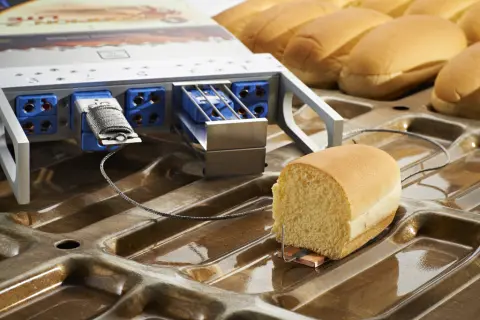Every bakery chases the same sweet spot: consistent color, ideal texture, and the shortest path from start-up to spec. Humidity profiling helps you get there faster. By tracking how moisture behaves throughout the bake, you’ll see why products dry too soon, color too late, or go stale before they should – and you’ll fix it with fewer tests and less waste. Here’s some information from Reading Thermal on how humidity profiling enhances industrial baking efficiency.
Why Humidity Profiling Matters
Temperature tells you how heat arrives; humidity reveals what the dough does with it. When the air is too dry early in the oven, crust can set before the crumb is ready, trapping moisture and inviting tunnels or uneven lift. When it’s too wet for too long, color lags and the finish stays leathery. Profiling humidity lets you match moisture conditions to each stage so structure locks in at the right time and color develops evenly across the belt.
See Moisture’s Story, Zone By Zone
Efficiency isn’t only about running faster – it’s about running right the first time. A clear humidity curve shows how water leaves the product and how steam accumulates or dissipates in each zone. With that picture, you can tighten dampers, fine-tune steam injection, and coordinate zone temperatures without guesswork. Small moves, like a gentler humidity rise in Zone 1 or a drier finish in Zone 3, often deliver the big wins: shorter changeovers, fewer re-bakes, and a steadier path to your target water activity and shelf life.
Tools That Make it Practical
Reading Thermal’s SCORPION® 2 Data Logger paired with the Humidity Sensor lets you measure moisture conditions inside the oven on the same pass you measure temperature. Add a Temperature Sensor Array to map hot and cool regions across the belt so you can see how heat and humidity interact. The Air Velocity Sensor and Heat Flux Sensor help you understand airflow and heat transfer when color or texture won’t settle down. You can start with humidity and temperature today and expand as your team’s questions get more specific.
Turn Curves Into Savings
Data only matters if it changes what you do tomorrow. If crackers need more snap, a quick look may show humidity staying high too late, slowing surface drying; trimming steam in the middle zones can restore crispness without bumping overall temperature. If buns are drying out on day two, you might find an overly dry early zone pulling moisture too fast; a modest humidity lift there can protect softness while keeping color on track. Each targeted fix cuts scrap, reduces troubleshooting time, and often lets you inch line speed up without sacrificing quality.
Bake Faster, Smarter, and With Confidence
Humidity profiling turns invisible moisture into visible decisions. When you can see how humidity rises, peaks, and falls through the oven – and how that pattern lines up with temperature and product set – you’ll cut guesswork, shorten start-ups, and protect shelf life.
With tools from Reading Thermal, you’ll have a practical, bakery-ready way to tune each zone and keep efficiency high shift after shift. That’s how you move from firefighting to predictable, scalable baking. If you would like more information on how humidity profiling enhances industrial baking efficiency, please use our online contact form or give us a call at 610-678-5890.

